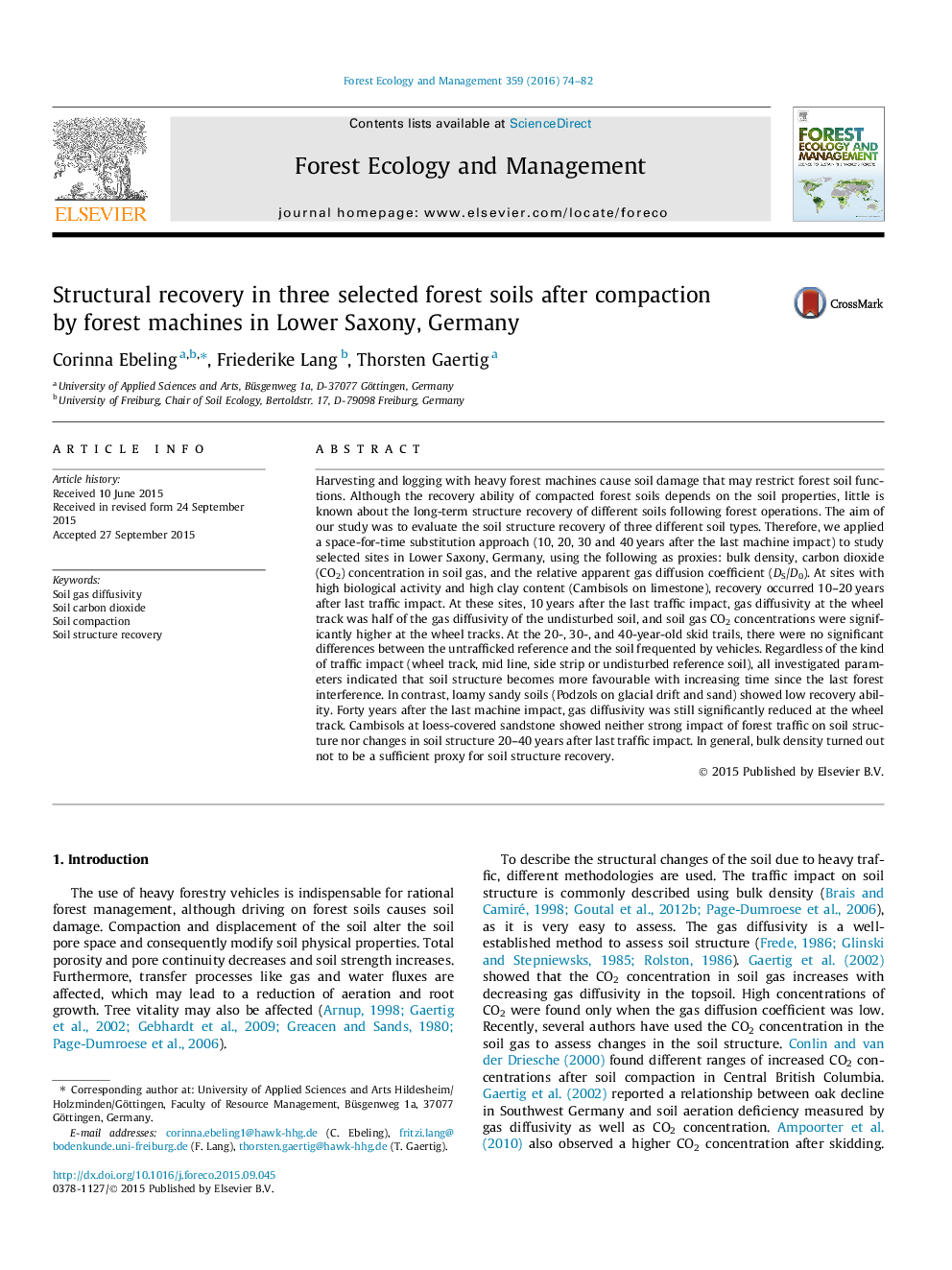| کد مقاله | کد نشریه | سال انتشار | مقاله انگلیسی | نسخه تمام متن |
|---|---|---|---|---|
| 6542628 | 159164 | 2016 | 9 صفحه PDF | دانلود رایگان |
عنوان انگلیسی مقاله ISI
Structural recovery in three selected forest soils after compaction by forest machines in Lower Saxony, Germany
ترجمه فارسی عنوان
بازیابی ساختاری در سه خاک جنگل انتخاب شده پس از تراکم توسط ماشین آلات جنگل در نهاوند ساکسونی، آلمان
دانلود مقاله + سفارش ترجمه
دانلود مقاله ISI انگلیسی
رایگان برای ایرانیان
کلمات کلیدی
نفوذپذیری گاز خاک، دی اکسید کربن خاک، تراکم خاک، بازیابی ساختار خاک
موضوعات مرتبط
علوم زیستی و بیوفناوری
علوم کشاورزی و بیولوژیک
بوم شناسی، تکامل، رفتار و سامانه شناسی
چکیده انگلیسی
Harvesting and logging with heavy forest machines cause soil damage that may restrict forest soil functions. Although the recovery ability of compacted forest soils depends on the soil properties, little is known about the long-term structure recovery of different soils following forest operations. The aim of our study was to evaluate the soil structure recovery of three different soil types. Therefore, we applied a space-for-time substitution approach (10, 20, 30 and 40Â years after the last machine impact) to study selected sites in Lower Saxony, Germany, using the following as proxies: bulk density, carbon dioxide (CO2) concentration in soil gas, and the relative apparent gas diffusion coefficient (DS/D0). At sites with high biological activity and high clay content (Cambisols on limestone), recovery occurred 10-20Â years after last traffic impact. At these sites, 10Â years after the last traffic impact, gas diffusivity at the wheel track was half of the gas diffusivity of the undisturbed soil, and soil gas CO2 concentrations were significantly higher at the wheel tracks. At the 20-, 30-, and 40-year-old skid trails, there were no significant differences between the untrafficked reference and the soil frequented by vehicles. Regardless of the kind of traffic impact (wheel track, mid line, side strip or undisturbed reference soil), all investigated parameters indicated that soil structure becomes more favourable with increasing time since the last forest interference. In contrast, loamy sandy soils (Podzols on glacial drift and sand) showed low recovery ability. Forty years after the last machine impact, gas diffusivity was still significantly reduced at the wheel track. Cambisols at loess-covered sandstone showed neither strong impact of forest traffic on soil structure nor changes in soil structure 20-40Â years after last traffic impact. In general, bulk density turned out not to be a sufficient proxy for soil structure recovery.
ناشر
Database: Elsevier - ScienceDirect (ساینس دایرکت)
Journal: Forest Ecology and Management - Volume 359, 1 January 2016, Pages 74-82
Journal: Forest Ecology and Management - Volume 359, 1 January 2016, Pages 74-82
نویسندگان
Corinna Ebeling, Friederike Lang, Thorsten Gaertig,
